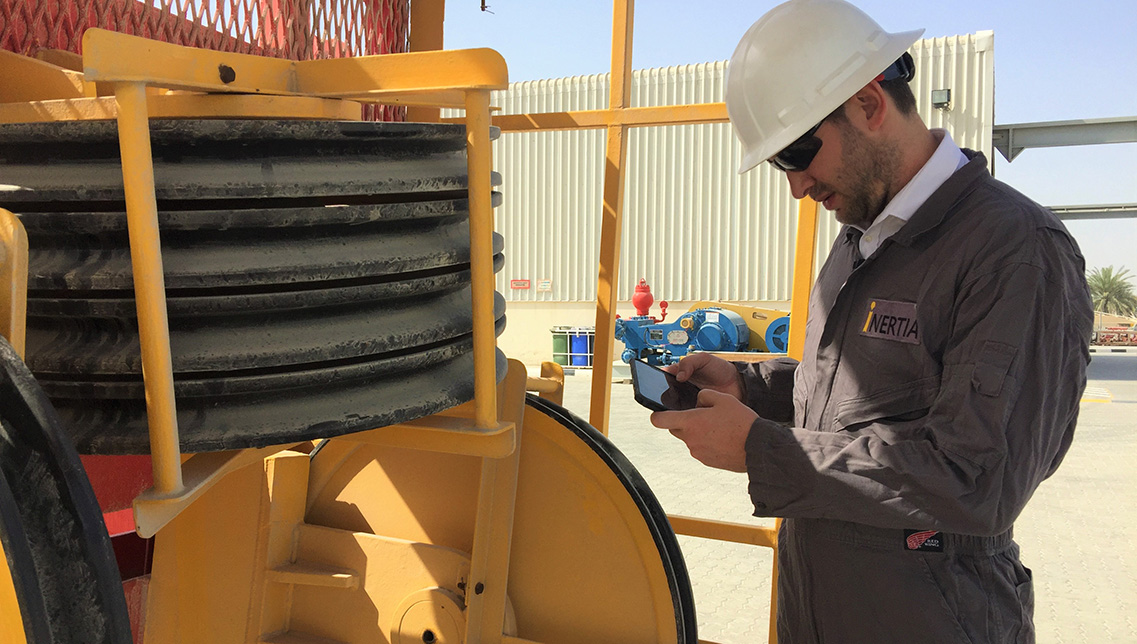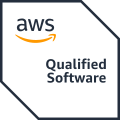Inspectivity’s no-code inspection software offers a unique value proposition for operators of critical infrastructure and engineering teams.
- Reduce man-hours associated with the inspection activity lifecycle
- Improve collaboration with engineering stakeholders
- Improve sustainability and deliver outcomes faster
- Reduce resourcing impacts and reliance on tribal knowledge
- Gather high-quality data to learn actionable insights
Inspectivity was founded based on the strategy of improving productivity, collaboration and data quality in relation to asset-centric engineering inspection. The founders saw a significant opportunity to develop a modern approach to replace legacy processes and address the inherent inefficiencies associated with existing systems.
The marketplace for form-based mobile solutions and engineering asset management is crowded, however, we noted significant opportunities to differentiate with new technology and crucially to address a significant issue facing major projects, asset owners and operators.
Most teams do not have access to the engineering asset data they need to analyse, predict or automate.
Engineering software landscape
Engineering Software
The IT landscape to support engineering teams can be complex, especially with the differing requirements for software solutions across the full project lifecycle of engineering, construction and then handover to operations. Solutions are required to support critical decision-making. To improve delivery efficiency and sustain operations long into the future.

Enterprise asset management for operations has, at its heart, the enterprise resource planning (ERP) system or sometimes referred to as the CMMS. The ERP is a transactional platform focused on commercial aspects and scheduling, they are very large monolithic applications and cover a wide range of capabilities.
Supporting the ERP are solutions for the reliability of mechanical equipment (APM), document management repositories and of course analytics platforms to support both future improvement and decision science.
Amongst the many other applications used, completions management systems and digital twins provide critical support for project delivery into operations.
Separate inspection management system
Why do we need a separate inspection management platform?
ERP and Digital Inspection
The ERP system is typically not a good repository of asset technical, inspection, issue and media data. Why? This is because of the variability of this data across the organization, industries and sectors.
ERP vendors are recognising this fact and providers are moving towards a trend to slim down the function of the ERP and integrate functionality from other systems and domains. Inspection Management is one such domain. This is being driven by a range of factors such as:
- The poor user experience of complex ERP platforms
- High cost of software development
- Resourcing challenges for ERP implementation teams
APM and Digital Inspection
APM sits beside the ERP to consume the transactional aspects of work order management, understanding changes to the asset hierarchy to provide predictive forecasting and reliability-centred maintenance schedules.
Integral to APM is the collection of a rich and strongly typed data set. It is through high-confidence data that accurate predictions can be achieved. Many APM systems provide first-class algorithms to predict future maintenance strategies however many are equally guilty of taking input from subjective manual inspection assessments. Digital inspections collect data with strongly typed forms that avoid the “garbage in, garbage out” scenario by removing subjective verbose assessments.
Read our deep dive into ERP, APM and digital inspection here.
Construction and Digital Inspection
Inspection is ubiquitous across the full “project delivery to operations” lifecycle. Relying on traditional completions management to track verification status limits efficiency in handover to operations and worse loses the opportunity to bring visibility to project delivery data. Data captured during engineering and construction phases is invaluable to operational teams maintaining the asset into the future. Legacy completions management solutions miss this opportunity.
What is inspection?
Inspection is often seen as a subset of maintenance however inspection is simply data collection.
- Maintenance is inspection
- Verification is inspection
- Audits are inspection
- Surveys are inspection
Inspection is everywhere in engineering and the project lifecycle.
Quantitative and qualitative benefits
Reduce Costs
Overall, Inspectivity’s cloud inspection management platform can reduce the man-hours associated with inspection activities by anywhere between 25 and 50 per cent:
- Time is saved in planning – the traditional data mining activities for an inspector (preparing for inspection) are automated.
- Time is saved conducting the inspection – they have all the information at their fingertips with fewer trips back to the desk for missing data.
- Time is saved with automated reporting – removes double handling of information associated with traditional paper approaches.
Improve collaboration
Engineering teams work across geographical boundaries. For example, field teams based at multiple locations and engineering stakeholders at head office or in a “Work From Home” capacity. Cloud-based digital platforms connect all stakeholders in the lifecycle of the inspection activity.
Be more sustainable
Clients can achieve a greater return by investing in a single holistic platform that can drive digital inspection for multi-disciplinary teams (ie. digital inspections across the organisation). This means Inspectivity can deliver digital inspection for multiple use cases and disciplines.
Improve predictive analytics by collecting high-confidence data. Higher confidence inputs mean that predictive analytics will be more accurate which allows maintenance cycles to be stretched out.
Deliver major new build projects more efficiently. For example, leveraging Inspectivity’s full project lifecycle capabilities to use the solution for digital inspection data collection during the delivery phase whilst simplifying the handover process to operations. A digital data handover can be used to populate operational systems at Go Live.
Reduce resourcing impacts
A digital process is framed and simplifies knowledge handover. It also leads to less reliance on tribal knowledge that is inherent with senior operators. By transitioning to a digital approach operators have the ability to leverage junior staff.
Gather high-quality data
Data is arguably an organisation’s most valuable asset.
- Without it, decision-making is slow
- Without it, we introduce guesswork and risk
Digital inspection democratises access to inspection data:
- A paper approach means inspection data is typically locked away in PDFs, whereas a digital inspection approach provides accessibility in real time for all stakeholders:
- Downstream engineering
- Senior management
- Compliance
- Environmental
- Safety
- Statutory authorities
Digital inspection brings visibility of issue status. Accessibility to a comprehensive and searchable media library for inspection and issue history including any photo, video or sound file gathered during an inspection activity.
Digital inspection data lays the foundation for future opportunities in machine learning, automation and decision science. Without a digital data set, future opportunities to leverage near-term technologies will be limited.
Misconceptions, risks and mistakes
ERP is not an inspection management system
A common misunderstanding is that the ERP system is an inspection management solution. The ERP has a wide functional remit but it is essentially a transactional platform to support the work management process. It is not a good repository of asset technical data, inspection, issue and media data. Why? This is because of the variability of this data across the organization, industries and sectors.
What are the risks of not doing it?
Health, safety, environmental, and compliance risks:
- No visibility of data outside the core inspection team
- No ability to compare and contrast data to support decision making
- No visibility of the status of critical issues
Future earnings, reputation and legal:
- Inefficient operations
- Lack of data to innovate, optimise and automate
- Risk of being made redundant amongst your competition
- Legal risks (eg. industrial manslaughter)
Common Mistakes
Not using technology:
- Paper approaches are inefficient with the double handling of data.
- Paper processes are organic, leading to deviations and subjective data.
- Leads to a heavy reliance on tribal knowledge.
- Data cannot be shared easily.
- Impacts your team’s ability to collaborate.
Using the wrong technology:
- Form builder apps allow you to configure a digital form to collect data on a mobile device but this is only 50% of the equation. A simple form speeds up the collection and the preparation of a report but (for engineering teams) there is also a need to relate the data to the asset. We need to carry it “forward to create a catalogued historical data set.
- Solutions for a niche use case such as EEHA only solve one requirement. Most engineering operations are multi-disciplinary. Don’t proliferate different tools for different use cases making life hard for the end user and giving solution architects a nightmare scenario of endless integrations.









